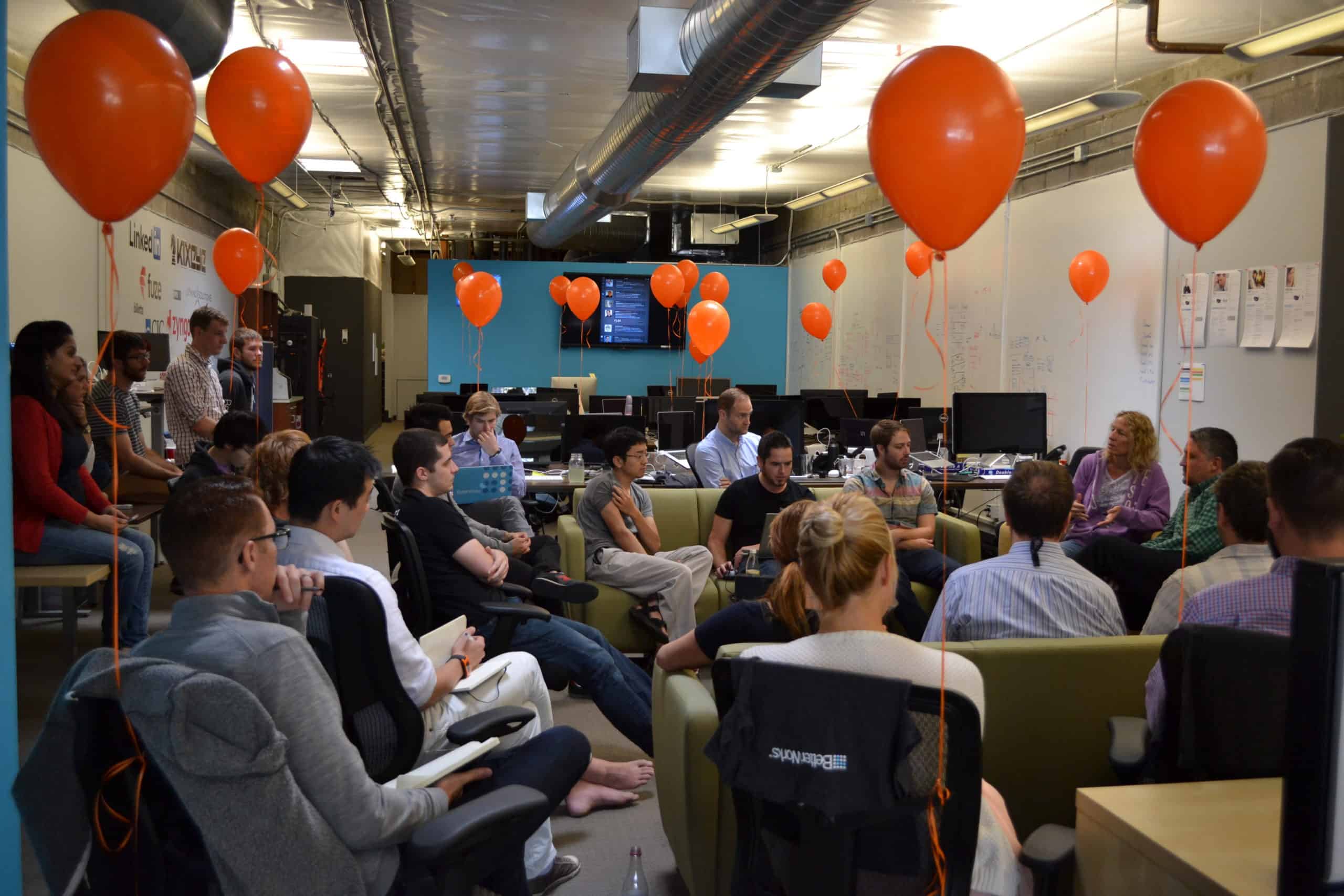Experience and perspective are important contributors to success. In keeping with our BetterWorks tradition of learning from influential leaders, Shona Brown recently sat down with our team, sharing thoughts about operational excellence from her time at Google building both the People Operations and Business Operations groups. Full disclosure: Shona is also on the BetterWorks Board of Directors.
BetterWorks Team: What does it mean to be operationally excellent?
Shona Brown: To be operationally excellent, a business must consider its employees a really valuable asset and strive to get the most from them. We are all familiar with dysfunctional workplaces. There are workplaces with a lack of clarity and where people don’t know what they are doing or why they are doing something. There are workplaces where a lack of communication means some parts of the business don’t know what other parts are doing. The result is it’s slow as molasses to get something done. When people aren’t working together, that’s manifested in reinventing the wheel and slowing down, which are measurements of efficiency and effectiveness. When we don’t see those symptoms, a company is more operationally excellent.
BetterWorks Team: What metrics best show operational effectiveness?
Shona: For companies that create products an ultimate measure of effectiveness is engagement with your product. You can measure to what degree your product is being used through reach. Quality may still be a question, but at least you have a baseline. You can also measure whether your product is making a difference for the user – this is harder to do, but identifying an outcome metric that your product effects is crucial feedback.
Speed is another measure of effectiveness that is important. But speed can be messy, so you need to understand the trade-offs. If you launch products often, you need to determine what kind of ugliness is acceptable and also what levels of customer interaction and satisfaction you want to see.
On the people side, the ultimate measure of effectiveness is retention. Employee surveys can be helpful to identify why people are staying and exit interviews help understand why people leave. For companies that depend on attracting and retaining demanding knowledge workers, deep insight into retention is critical.
BetterWorks Team: Employee engagement continues to be a hot topic, what does it mean to you?
Shona: Google didn’t actually use this term. We were obsessed at Google with measuring attrition—regretted and non-regretted attrition—and we had industry-leading rates in these areas. Maintaining low attrition is of course harder as a company grows. Engagement to me is more than retention and measuring engagement is much harder. If you walk through an organization or go to a company cafeteria you quickly get a sense of how engaged people are at that business. People are there, but how engaged are they? You can feel where there is excitement and that probably adds 20-30% more value to an organization. But measuring that is very difficult.
In general, I think of engagement is having every individual contributing what is within his or her capabilities at all times for a sustained period—without burning out. Some engineers can work 18 hours a day, 365 days a year, but that’s not realistic for most knowledge workers. Trying to understand what is happening with engagement by looking at your ability to retain people is an important step. Then you can pair that information with general health surveys to measure how people are feeling about working at your business to get a sense of engagement.
BetterWorks Team: What are some steps companies can take to improve operational excellence?
Shona: I am quite passionate about making workplaces a better experience for people. When you think about it, people spend the most time sleeping, so they need their bed to be comfortable and safe. They spend the second largest amount of time in the workplace. So if Betterworks can help individuals be and feel more effective in the workplace that is pretty important. There is a lot of research about how being more useful at work also makes people happier in life in general.
In my experience, physical location is also important. The fewer the number of locations and more present people are, the more and the better the work that gets done. This is my general rule for work productivity: I want as much work co-location as possible for as long as possible.
To improve operational excellence, I believe businesses need to provide opportunities for opportunistic communication—to let people solve problems “on the fly.” At Google, work hours spanned from about 7 a.m. to 9 p.m. Technical teams tended to work later, 10 a.m. or 11 a.m. to 8 p.m. or 9 p.m., while for example the finance team tended to work earlier hours of 7 a.m. or 8 a.m. to 5 p.m. or 6p.m. We only needed about six hours of overlap to have productive meetings and exchange information. The other three or four hours of time, employees could work whenever best suited them.
Businesses also need to make it permissible for people to have deep thoughts. Whether that means letting people stand at a desk wearing headphones or spreading around small conference rooms with closed doors. There has to be space to think deeply about problems. You need to be proactive about preserving ‘think time’. We had a rule that we didn’t have unnecessary meetings and for a while we preserved a “no meeting Thursdays” culture. People still came into the office on Thursdays and interacted, but we avoided mandatory meetings.
BetterWorks Team: What has been the biggest breakthrough in operations software over the last couple of years?
Shona: I’d say all of the software that has made collaborative behavior faster, simpler, and more transparent is one important development. Products like Google Docs I think are terrific. A big problem in organizations as they get bigger is friction in day-to-day communications. When your entire company fits into one conference room, there isn’t too much friction. When everyone fits in one room, communication is pretty easy. But when you move employees onto two floors, then friction builds. When you move into two buildings, employees are separated and no one wants to walk across the parking lot to communicate. The next collaboration challenge is time zones, which are really deadly. So I’d say that any software that is helping to reduce communication friction is very valuable.
Another important development is software that enhances availability of accurate operational data. Programs that help businesses better understand data center assets, supply chain, customer behavior, etc. In the last 20 years, the amount of visibility that businesses have about what is really going on with their operations in a timely fashion has been transformed. Decision makers are not guessing nearly as much as they used to have to.
BetterWorks Team: What are your thoughts on traditional enterprises becoming more open, transparent, and connected?
Shona: These characteristics will be least natural for enterprises in slow-changing environments to adopt. That’s because these companies will still be able to set three-year goals and work to achieve them over that period with little change. The more that is true, the less benefit it is to them to be open, transparent, and connected. Environments that have historically been extremely top-down driven will also benefit less from having independent thinkers with their own goals. These companies have performed well with a small number of order givers and a huge number of order takers. I believe that the number of companies that will be able to continue to operate successfully in this way will become smaller over time as all business environments become faster paced and trajectories are more difficult to predict.
For transparent goal setting, there are layers of readiness. Some groups in large enterprises will benefit from this type of goal setting before others are ready to do so. Definitely it is more likely that individual groups within large enterprises will be ready to adopt this approach earlier than the whole enterprise.
The BetterWorks team would like to thank Shona Brown for taking time to share her thoughts on what it means for companies to be operationally excellent. Stay tuned for part 2 of the Q&A!






